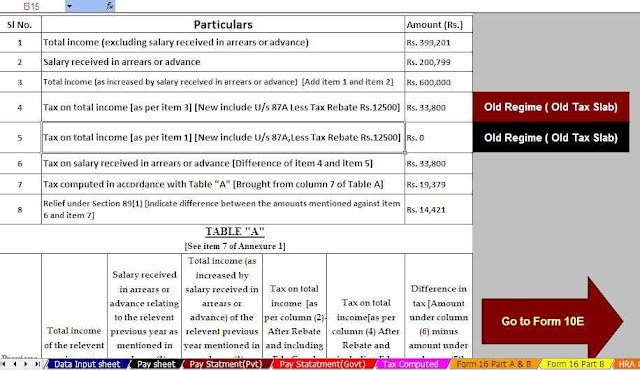Section 16 of the Income-tax Act, 1961 provides for the deduction of taxable income under the head
'salaries'. Provides deductions for the standard deduction, entertainment allowance, and employment
tax. With this deduction, an employee can reduce his taxable income from his taxable salary.
Also, with the recent changes in the standard deduction, the benefit of this section is extended to a higher amount. There is also no hassle in submitting travel and medical bills, making them easy to claim.
In this article, we will discuss each part of the 16 subtraction.
Normal payroll
deduction under section 16 (ia)
A normal deduction is allowed under section (16a) of the Income Tax Act. The standard deduction replaced Rs 19,200 transport allowance and Rs 15,000 medical reimbursement. In Budget 2018, our Finance Minister Jaitley introduced it.
Budget 2018 introduces a standard deduction of Rs 40,000 in place of transport allowance and medical reimbursement. This Rs 40,000 deduction does not require the taxpayer to submit an invoice or proof of expenditure. Provides a fixed deduction of Rs.40,000.
After the Interim Budget 2019, the deduction amount of Rs 40,000 was hiked to Rs 50,000. So the deduction for the tax year 2018-19 was Rs 40,000 and from the tax year 2019-20, the deduction will be Rs 50,000.
The standard deduction is also available to pensioners. CBDT issued a clarification clarifying the applicability of standard deduction for pensioners.
Pension received by the taxpayer from his former employer will be taxed under the term 'salary'. Given that the pension paid is taxed under the heading "salary", the deduction will also be available to pensioners according to Article 16
The deduction
available U/s 16 for the standard deduction is:
Earned salary
ANOTHER
50000 rupees
Whichever is lower?
Remember that the standard deduction is not connected with the deduction u/s 80C or any other part of section VIA.
Entertainment
Allowances under section 16(ii).
The entertainment payment is first included in salary income and then a deduction is granted based on certain criteria. The grant must be a grant that the employer provides to the taxpayer specifically as an entertainment grant.
Entertainment
allowance for government employee
For federal and state employees, the available deduction is the lesser of:
20% of the basic salary
5000 rupees
Amount provided for the distribution of exhibitions during the year
To determine the deduction, the taxpayer must make sure that the following conditions are met:
Salary may not include other benefits, employer's benefits or payments. In principle, the salary should be the gross amount received without regard to other benefits.
Never consider the actual amount spent on entertainment benefits you receive from your employer.
Entertainment
allowance for a Non-Government employee
The entertainment allowance deduction is not available to employees outside the public sector. Only government or state government employees are eligible for the deduction. Also, employees of municipalities and statutory companies are not eligible for the deduction.
Employment tax or
employment tax under section 16(iii)
The deduction is allowed for employment tax according to Article 16. Income Tax Act. The amount paid by the taxpayer as a result of employment tax or employment tax is allowed to be deducted according to Article 16. Here, employment tax is stipulated in paragraph 2. Section 276 of the constitution.
The points mentioned below must be taken into account when calculating the employment tax deduction:
Taxpayers only need to claim a deduction in the fiscal year in which employment tax is actually paid to the government.
Tax paid by the employer on behalf of the employee is also considered. Here, the amount paid by the wage earner as employment tax will first be taken as a basis for the total salary. Subsequently, the same amount will be allowed for deduction according to Article 16
According to Article 16 of the Income Tax Act, there is no upper or lower limit for the deduction. The deduction depends only on the actual amount of employment tax.
However, no government can collect more than Rs 2,500 per year as employment tax. Only tax paid is deductible, but not interest or surcharges due to late payment or non-payment of employment tax.
Feature of this Excel Utility:-
1) This
Excel utility prepares and calculates your income tax as per the New Section
115 BAC (New and Old Tax Regime)
2) This
Excel Utility has an option where you can choose your option as New or Old Tax
Regime
3) This
Excel Utility has a unique Salary Structure for Government and Non-Government
employees Salary Structure.
4) Automated
Income Tax Arrears Relief Calculator U/s 89(1) with Form 10E from the
F.Y.2000-01 to F.Y.2022-23 (Update Version)
5) Automated
Income Tax Revised Form 16 Part A&B for the F.Y.2022-23
6) Automated
Income Tax Revised Form 16 Part B for the F.Y.2022-23




0 Comments